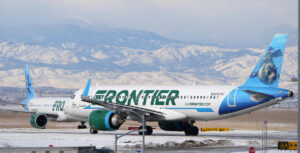The Future of Low-Cost Airlines: Challenges Ahead
In recent years, the landscape of the airline industry has undergone a significant transformation. Budget carriers, once the titans of no-frills, affordable travel, now find themselves grappling with rising costs and changing consumer preferences. As travelers become more discerning, opting for comfort over cost, the foundational business model of low-cost airlines is under pressure.
A Series of Missteps
One of the latest developments highlights this struggle: Spirit Airlines recently turned down a $2.16 billion acquisition offer from Frontier Airlines. This marks yet another chapter in what has been a turbulent saga for Spirit, which previously attempted to merge with JetBlue but was thwarted by regulatory hurdles. This historic friction within the industry not only points to a lack of viable partnerships but also reflects broader systemic issues facing the low-cost model.
Erosion of the Low-Cost Business Model
Low-cost airlines traditionally differentiate themselves by offering cheaper fares while charging separately for ancillary services, such as baggage fees and seat selection. They often capitalize on secondary airports to minimize operational costs. However, increased competition from traditional airlines and escalating costs for labor and maintenance are making this model less sustainable.
For instance, Southwest Airlines recently announced a departure from its long-held open seating practice to enhance revenue streams in response to shareholder pressures. Similarly, Frontier has plans to introduce upgraded seating options by as early as late 2025. These shifts indicate a responsive pivot rather than a steadfast commitment to the ultra-low-cost philosophy, suggesting that the traditional low-cost carrier approach may be in jeopardy.
Market Dynamics Shifting
Investor sentiment is not favorable. JetBlue’s recent disappointing outlook for 2025, reporting rising costs and lower-than-expected revenues, sent its stock tumbling. Similar concerns have been echoed by Southwest’s CEO, who warned of above-normal inflation in unit costs driven by wage increases and airport expenses. The results speak for themselves: while major airlines like United and Delta have seen their stocks thrive—up 140% and 60%, respectively—budget airlines are languishing. Frontier’s stock is up only 15%, whilst JetBlue and Southwest have declined by 5% and 10% respectively.
Navigating New Challenges
The primary challenge for low-cost carriers is the rising trend of international travel among consumers and an oversaturated domestic market, making it increasingly difficult to maintain competitive pricing. Fuel costs have also created significant margin pressure, and labor shortages are pushing personnel expenses even higher.
Despite this tumult, some low-cost airlines are pivoting toward market expansion in a bid to salvage the model. Yet, the mixed results reveal stark realities; Frontier’s attempts to compete against major carriers with minimal flight offerings have led many analysts to question the viability of their strategy.
Is the Market Still There?
There remains a segment of budget-conscious travelers willing to seek out cheaper flights; however, as noted by industry experts, accessing this market requires robust capital to sustain operations during challenging periods. Dan Bubb, an aviation historian and former pilot, emphasized that while the demand exists, only financially stable carriers can endure the current environment.
In summary, the future of low-cost airlines is marred by challenges ranging from increased competition and rising operational costs to shifting consumer preferences. For investors contemplating the feasibility of this sector, it’s essential to consider both the historical performance of these airlines and emerging trends within the broader travel market. Low-cost airlines might still hold some potential for savvy investors; however, navigating the treacherous skies ahead will require agility, innovation, and perhaps most critically, a reevaluation of what being a "low-cost" airline truly means in today’s market.
Whether you’re an investor, a frequent traveler, or simply curious about the evolution of the airline industry, staying informed about these shifts is crucial. Join us at Extreme Investor Network as we continue to analyze and discuss the evolving landscape of finance and investment opportunities.

